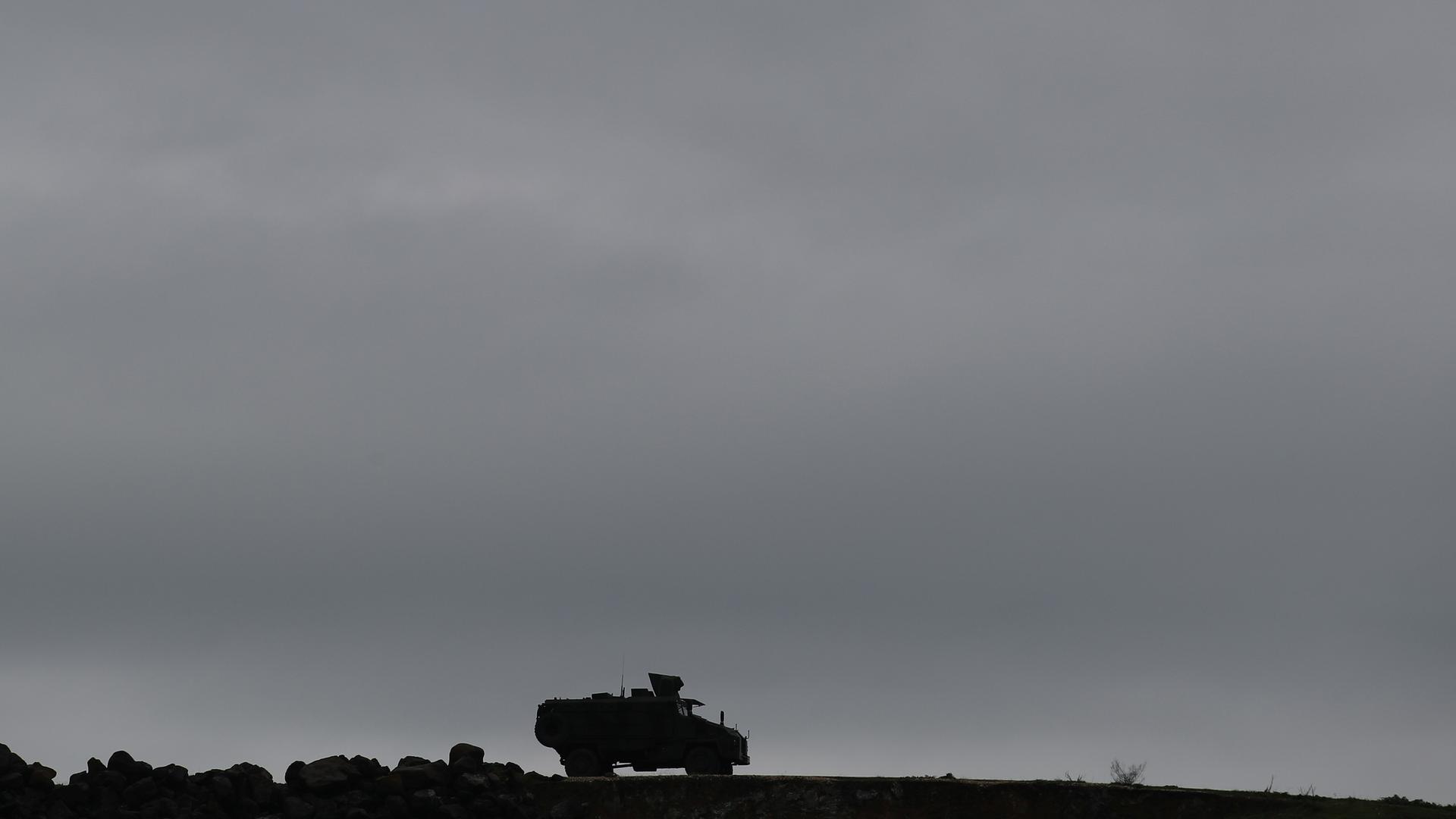On the night of October 27, the Turkish people were shocked by the news of a suicide bombing in Turkey’s southern region of Hatay. Two terrorists from the PKK/YPG terror group engaged Turkish security forces, one of which blew himself up rejecting handing over his weapons after being surrounded, while the other was killed during the encounter.
Thanks to the security forces, the terrorist was not able to harm any civilians, but the story of the use of paramotors (powered paragliders) to cross the border from Syria into Turkey and the choice of Hatay as a target is of particular importance.
The autonomous province of Hatay became a part of Turkey in 1939 after a plebiscite separating it from Syria. Ever since the Syrian regime has refused to accept that reality and continued to portray Hatay as part of Syria in its official maps. Not only Damascus, but the YPG also claims Hatay as a part of Syria.
The official flag of the YPG-umbrella group, the Syrian Democratic Forces, shows Hatay as part of Syria. From the viewpoint of the YPG, the self-declared three Kurdish cantons along the Turkish border should be connected – which can only happen through the ethnic cleansing of Arabs and Turkmens – and the landlock can be overcome by grabbing Hatay away from Turkey.
The YPG’s vision would then establish a communist state with direct access to the Mediterranean Sea and be less dependent on Turkey or other neighbouring states. Therefore, since the beginning of the PKK, Hatay has been considered an essential element in their terror activities.
In 2018, when Turkey conducted Operation Olive Branch with the Syrian National Army to liberate Afrin from the terror group; the latter lost a valuable opportunity to infiltrate into Turkey’s Hatay. Since then, the terror activities of the PKK in Hatay have decreased massively, but have not ended.
With the loss of the ability to launch guerilla warfare, the PKK resorted to other tactics, namely terrorising. Taking advantage of the heat, PKK cells attacked forests in Hatay and tried to set forest fires. While the PKK claimed credit for the sabotage acts via an offshoot, Turkish security officials managed to capture the perpetrators. But the damage was done and valuable forest burnt down.
The PKK had to find a new way of infiltrating Hatay. Within the PKK’s strategy motivated by hardline communists, the ‘struggle’ has to continue despite the odds. The main goal is not to enforce a military victory, but to facilitate political and social unrest, an increase of security measures, international outcry, and the alienation of the locals from the state. Therefore, the PKK had to come up with a sophisticated idea or give up on its claim to Hatay for the foreseeable future.
In the past, the PKK has tried to conduct sophisticated terror attacks by using self-made drones. Even though the PKK has learned from Daesh in Syria, the attempts have failed. Turkish security forces easily shot down the drones and in some incidents, Kurdish civilians in Turkey’s border region shot down the drones themselves.
But this time, the PKK/YPG has come up with a new idea. The PKK has used its areas in Syria to build paramotors and train its militants on operating them. After doing so, the terrorists fled from Syria’s Manbij, the nearest point from where the PKK could have operated freely, to Hatay’s mountains.
The use of a suicide bomb clearly shows that ‘terror’ was the ultimate goal of this failed operation. While the world mainly associates suicide attacks with Daesh, the PKK has been using suicide attacks before Daesh even came into existence.
In foiling this terror attack Turkey prevented a massacre, but it also shows that the Turkish approach to cross-border counterterrorism operations has been vindicated. After several cross-border mortar attacks and the use of Syria as a recruitment and training area for terror attacks in Turkey, now the PKK/YPG is flying into Turkey to conduct individual terror strikes. To ensure Turkey’s safety, the areas under the control of the YPG need to be liberated by the Syrian National Army – the Syrian people.
As terror groups are keen to learn from each other, this incident also shows that states around the world have to prepare themselves for terror attacks of similar sophistication. Technological progress also provides terror groups with new means to execute their agendas..
Disclaimer: The viewpoints expressed by the authors do not necessarily reflect the opinions, viewpoints and editorial policies of TRT World.
We welcome all pitches and submissions to TRT World Opinion – please send them via email, to [email protected]
Author: Omer Ozkizilcik @omerozkizilcik
Omer Ozkizilcik is an analyst for the SETA Foundation and is an editor at Suriye Gundemi.
Source










Discussion about this post